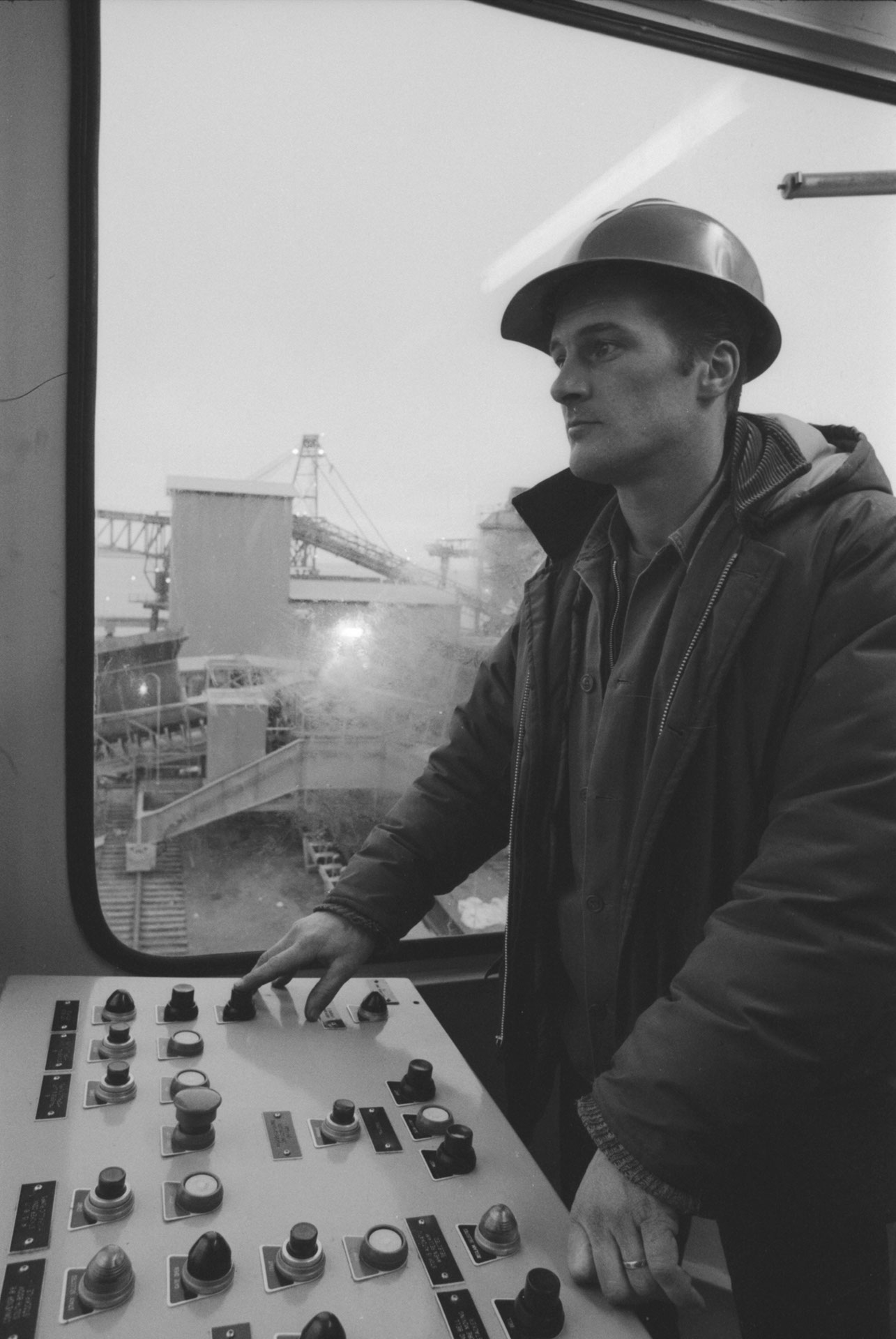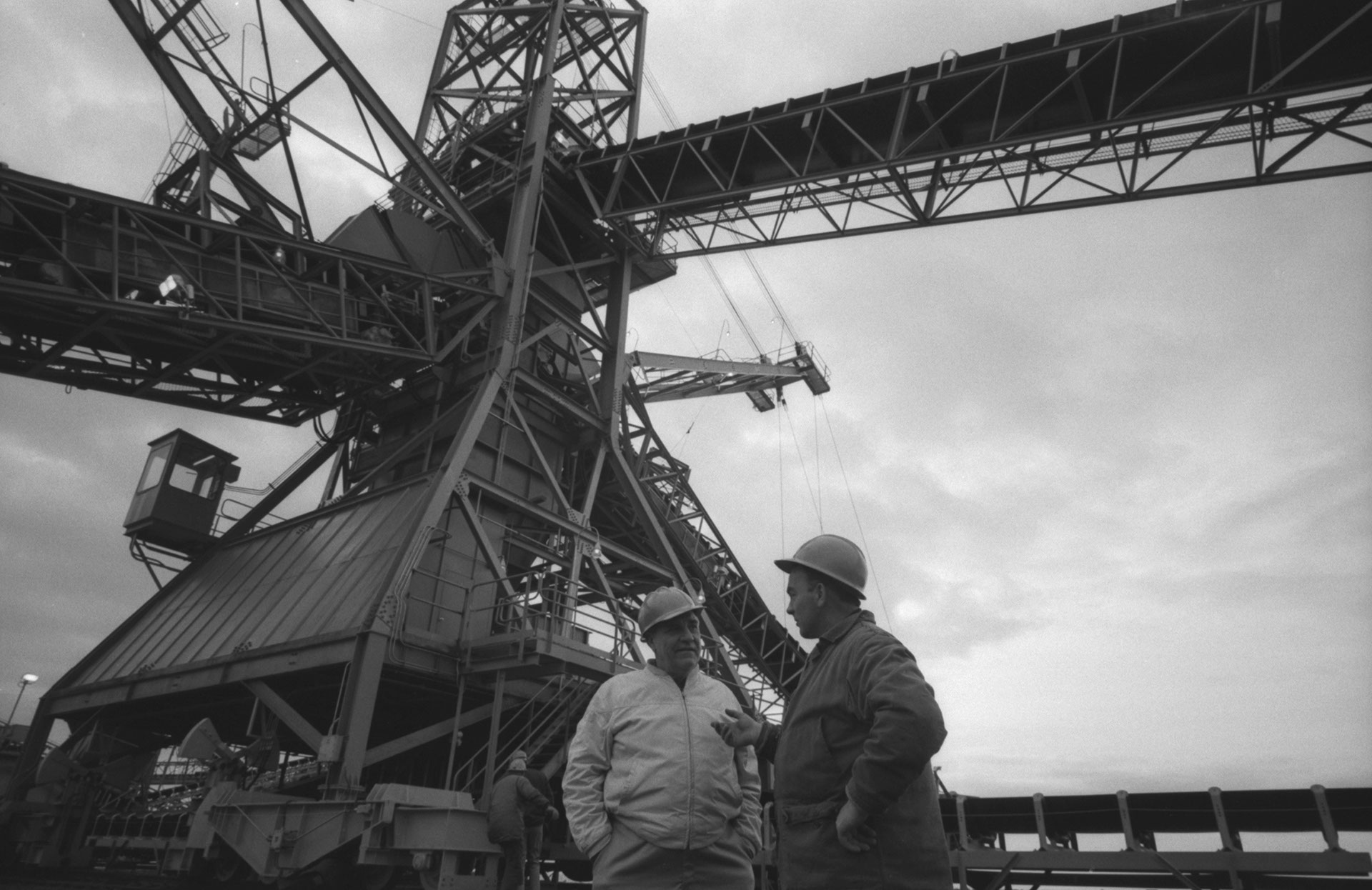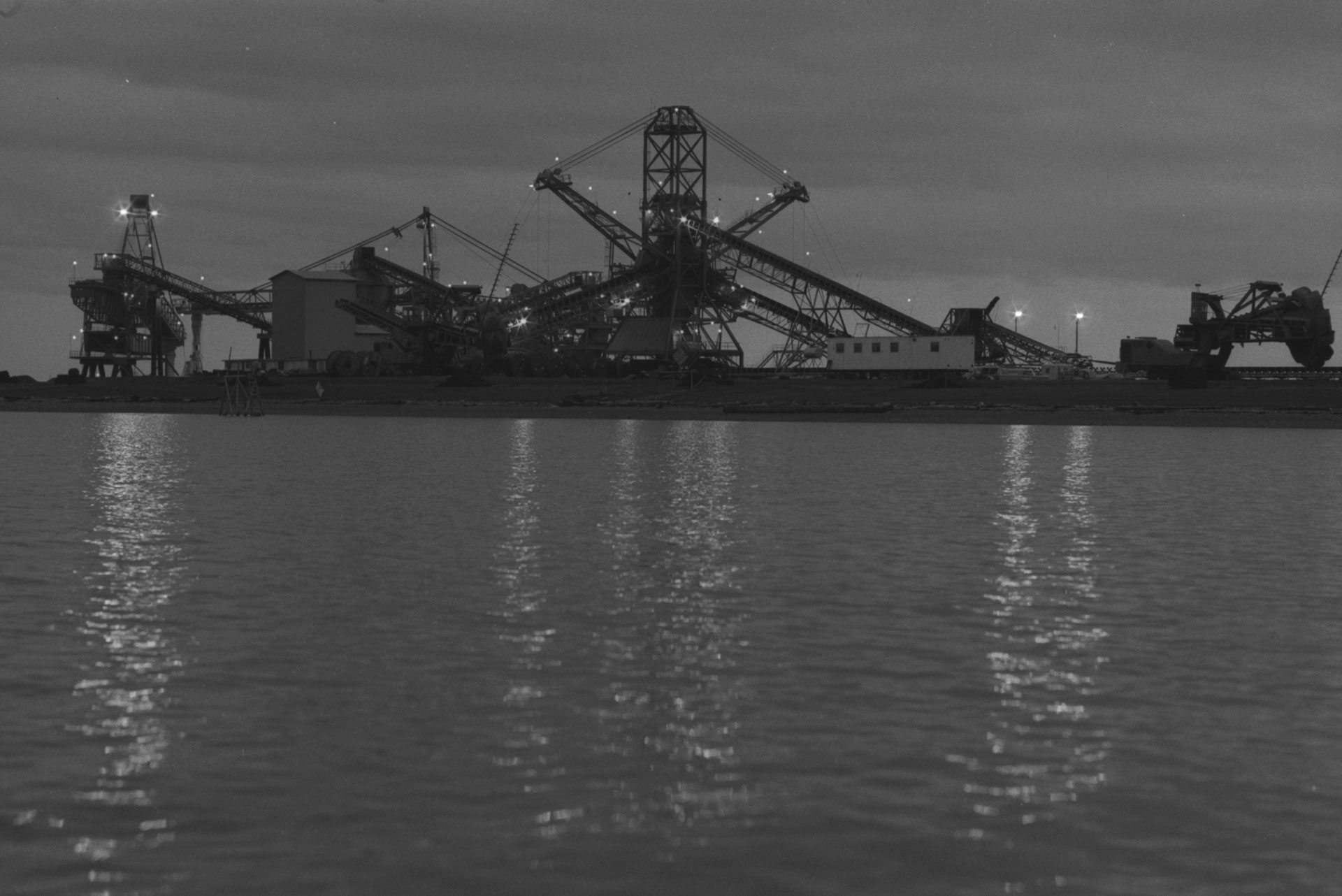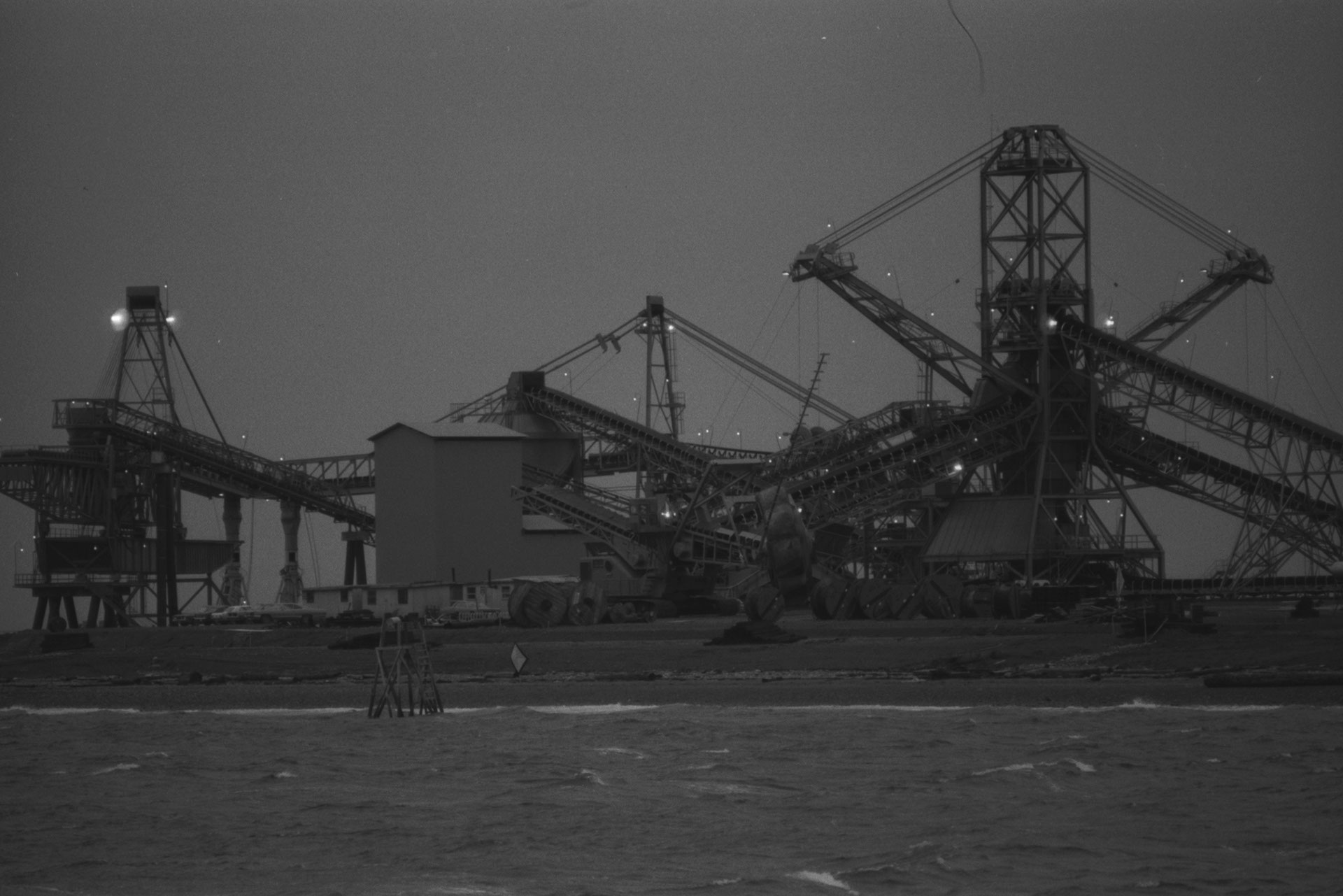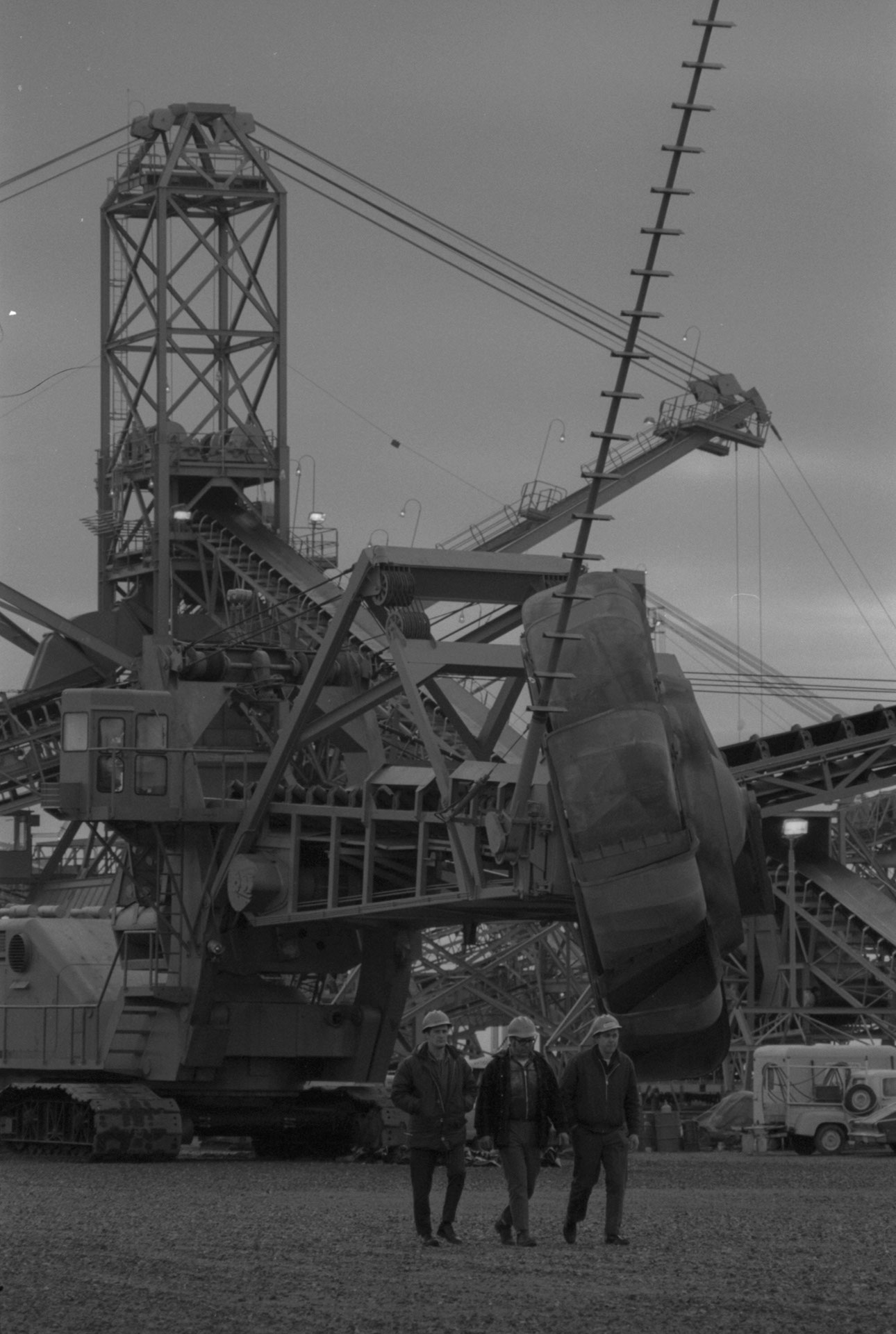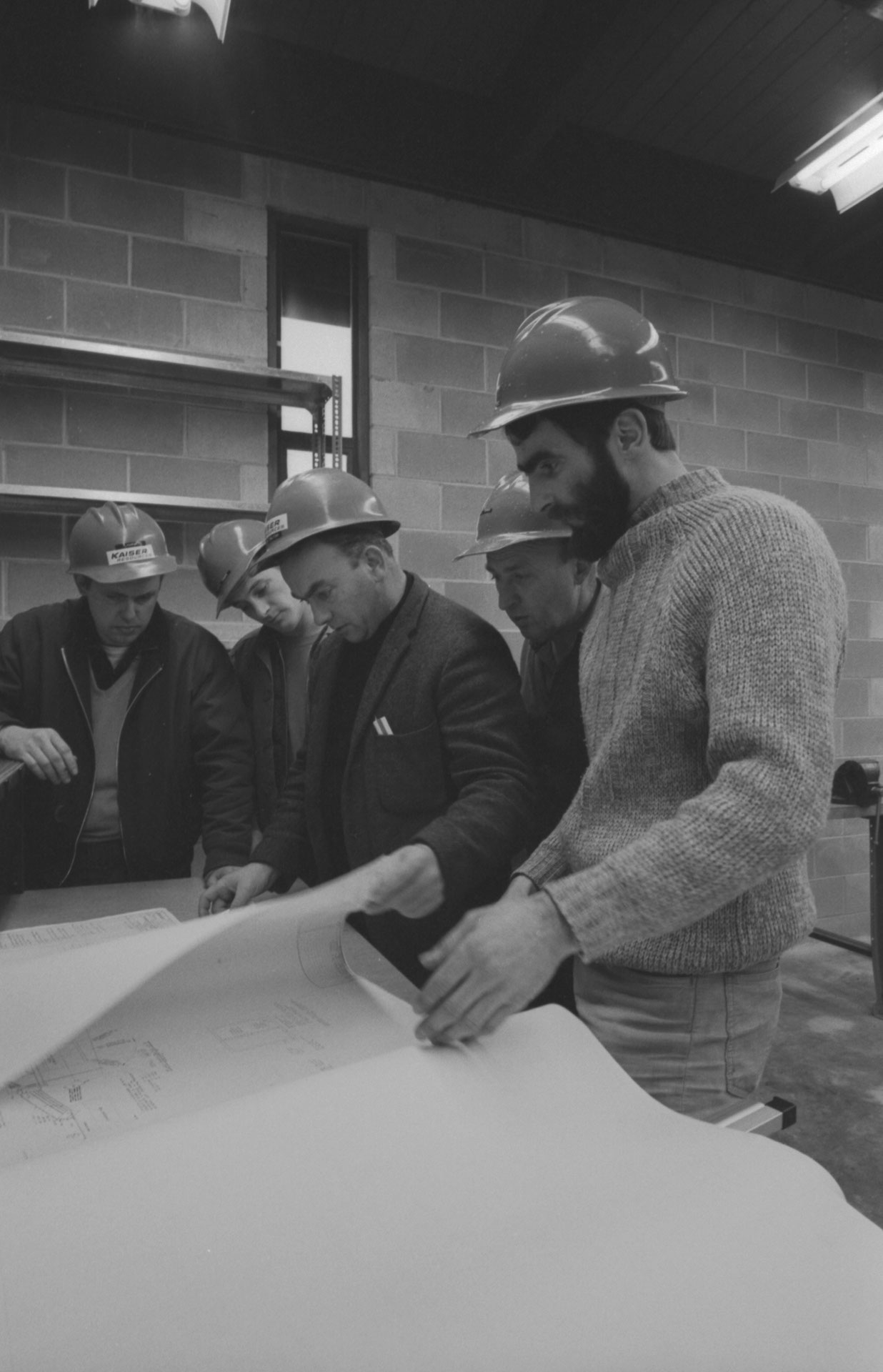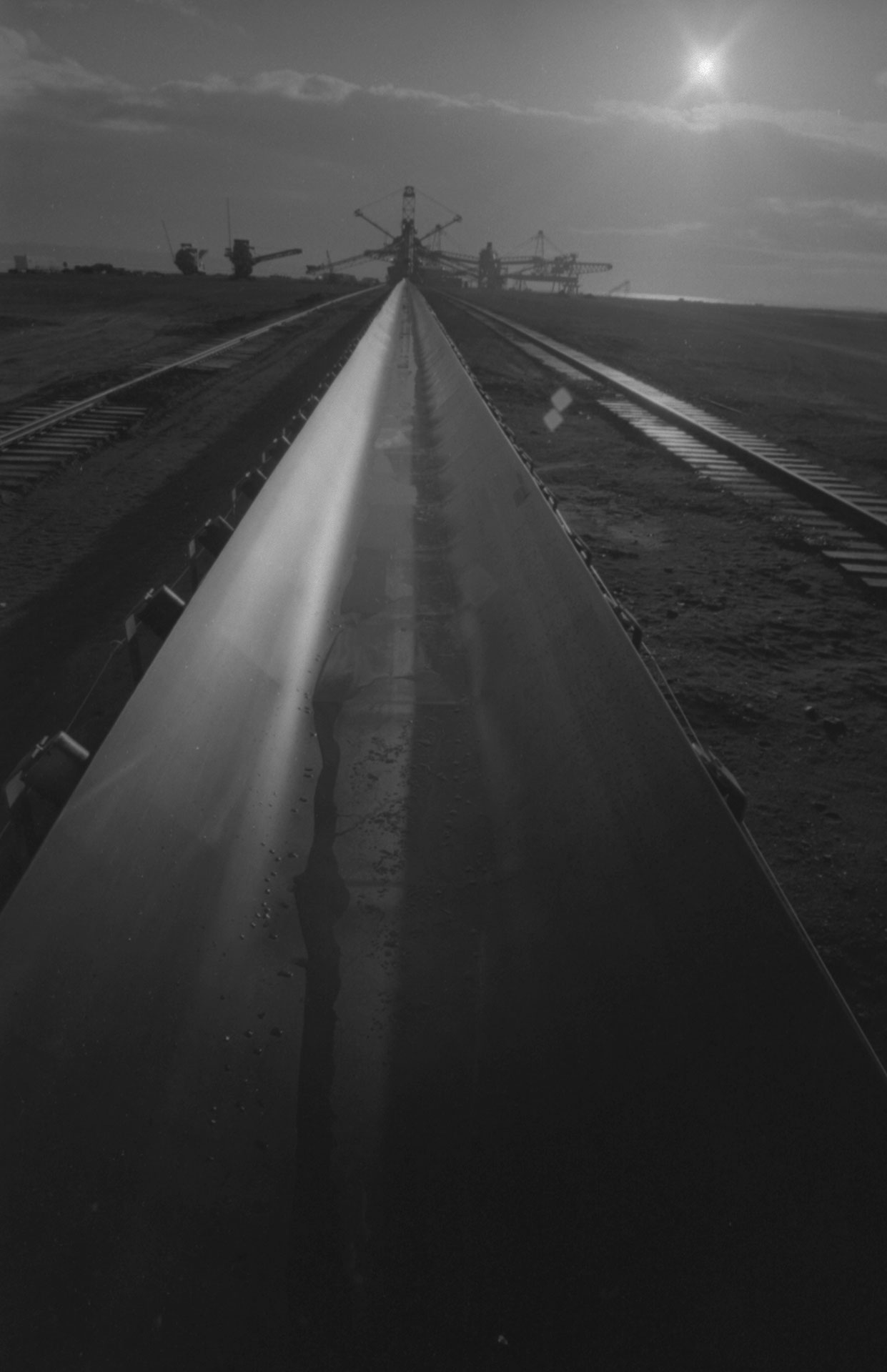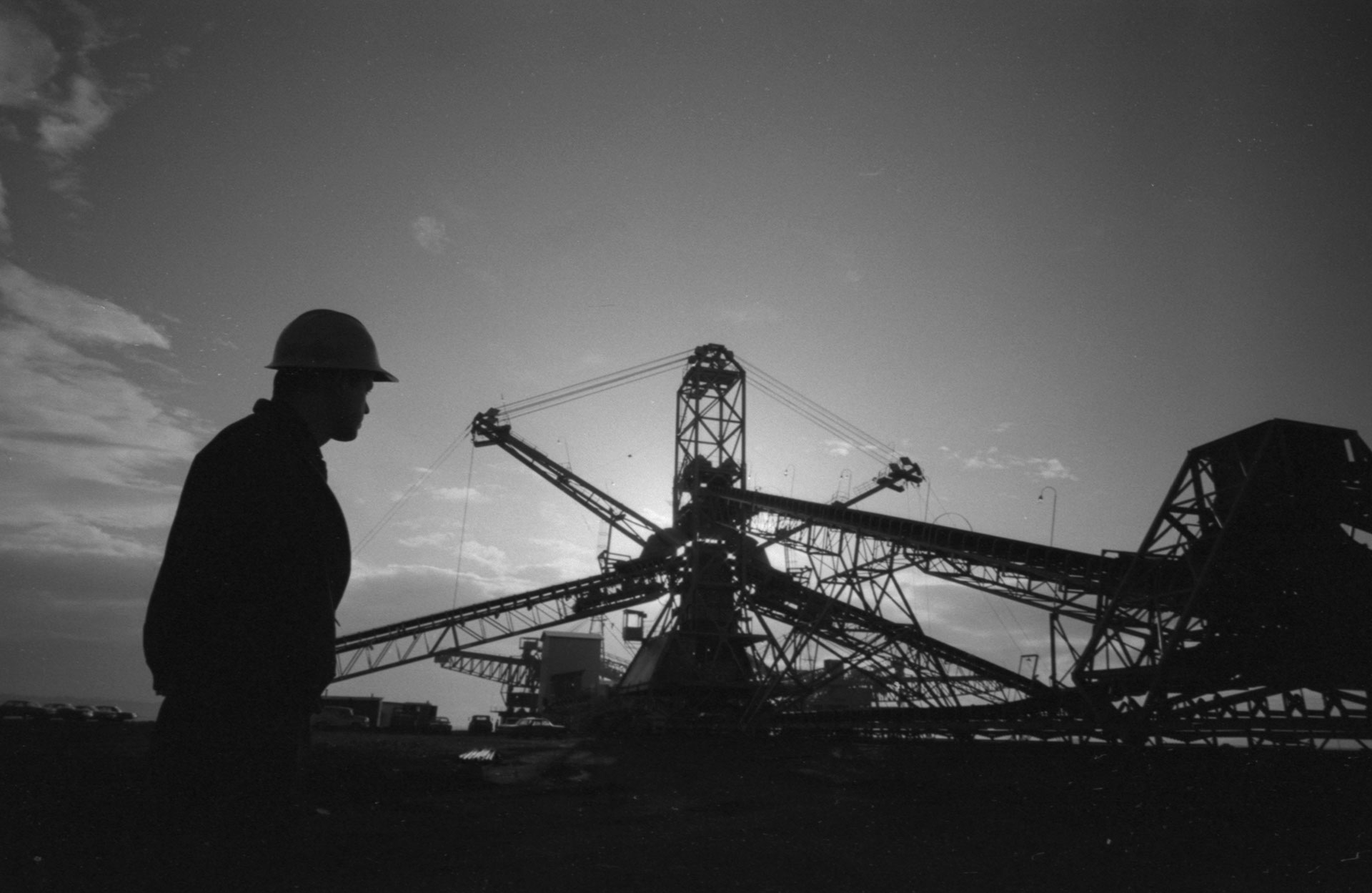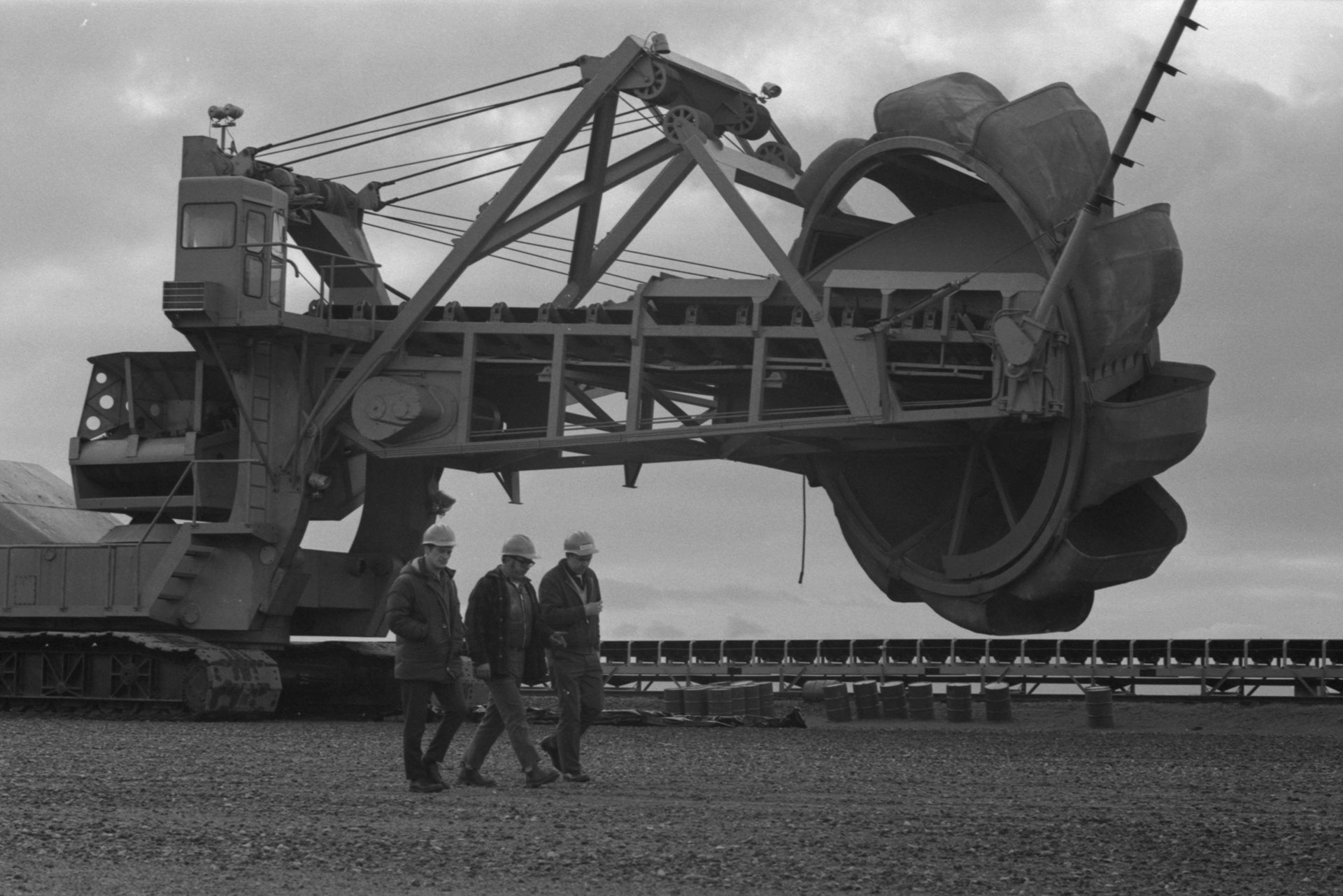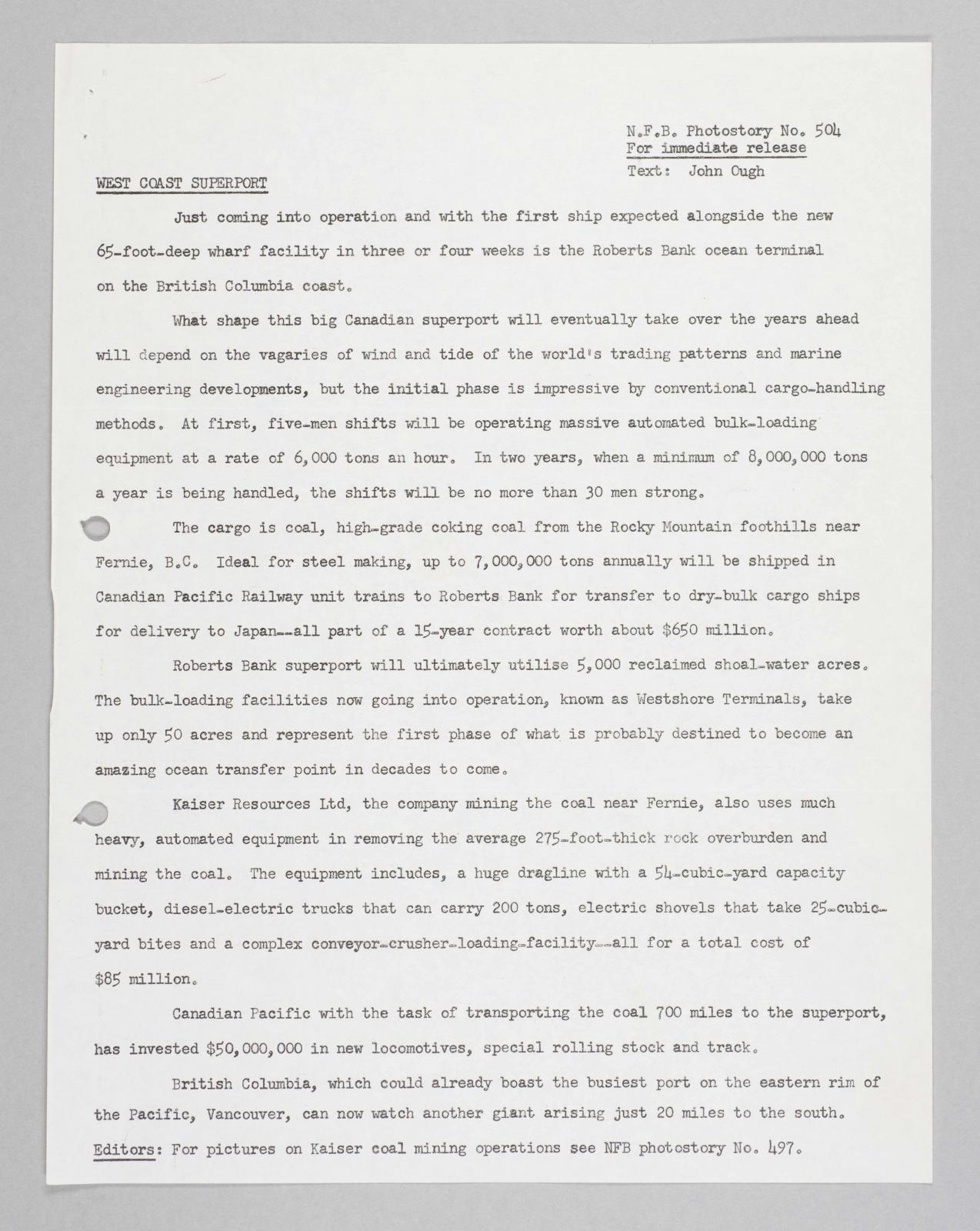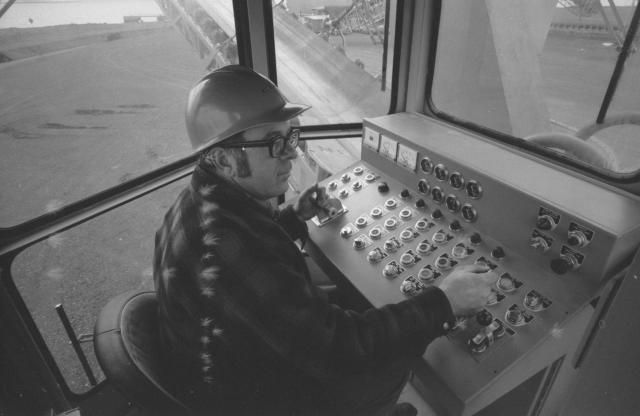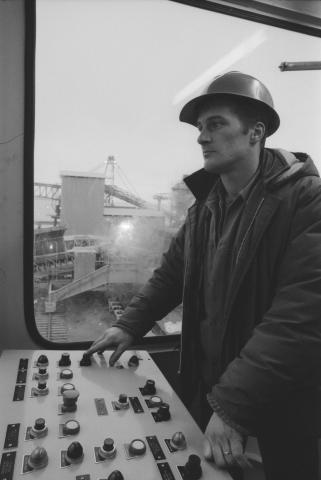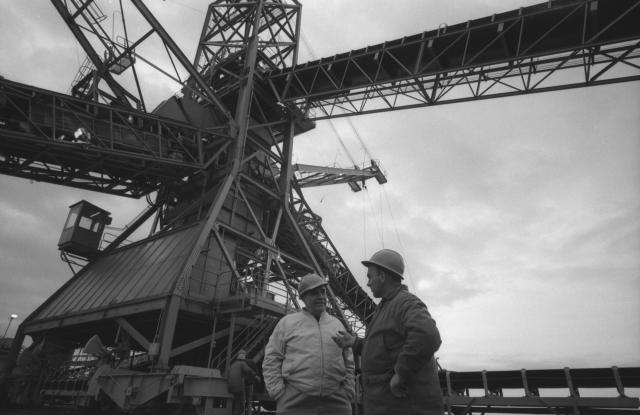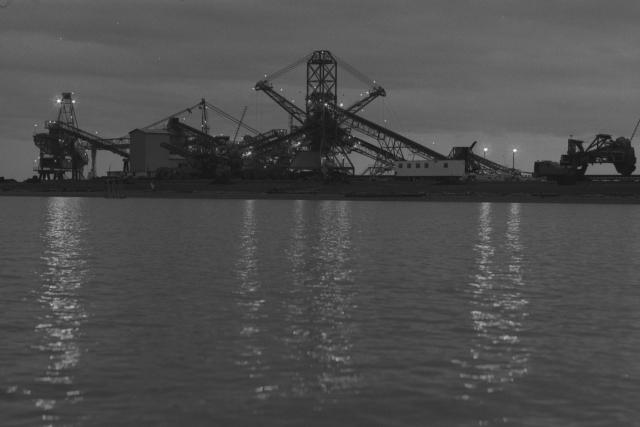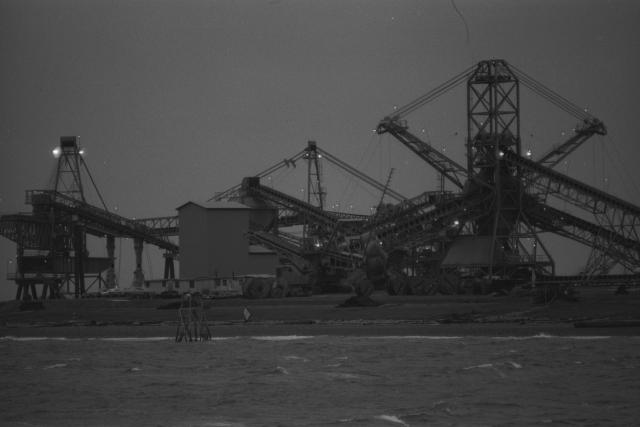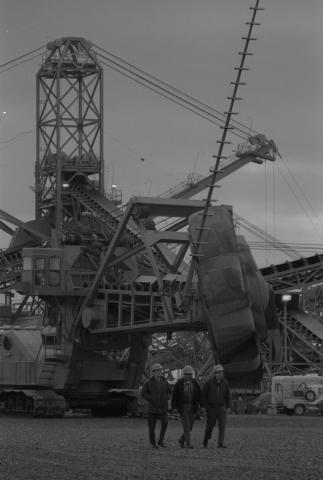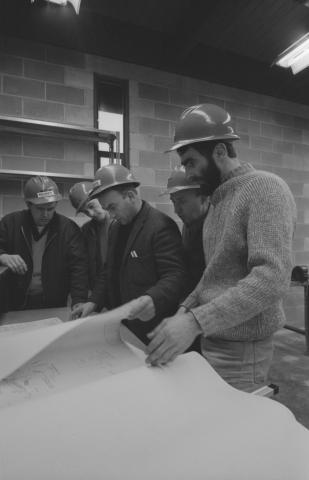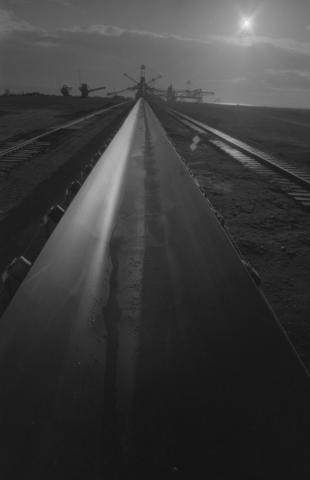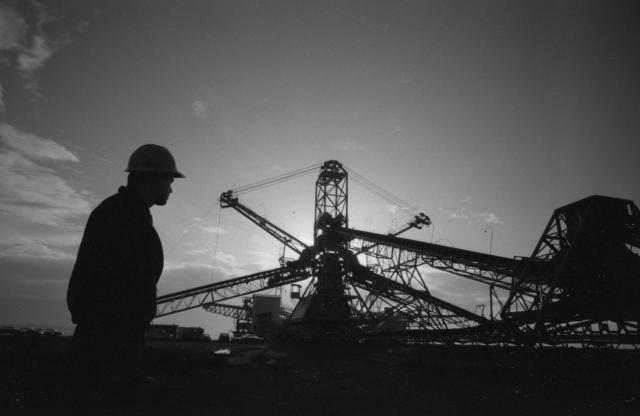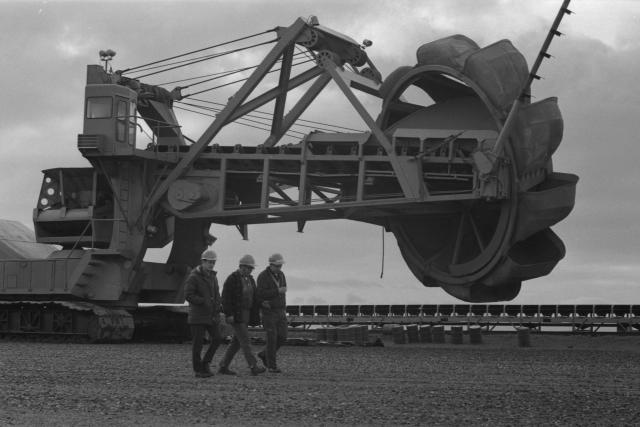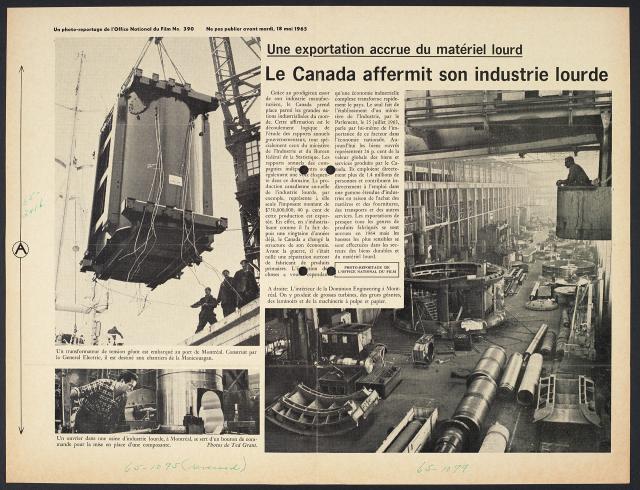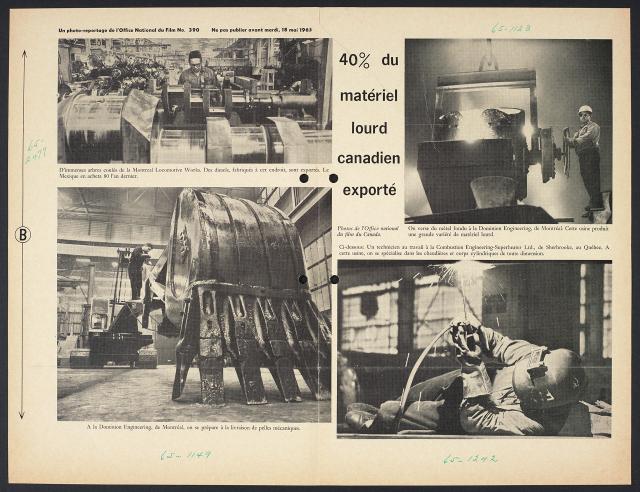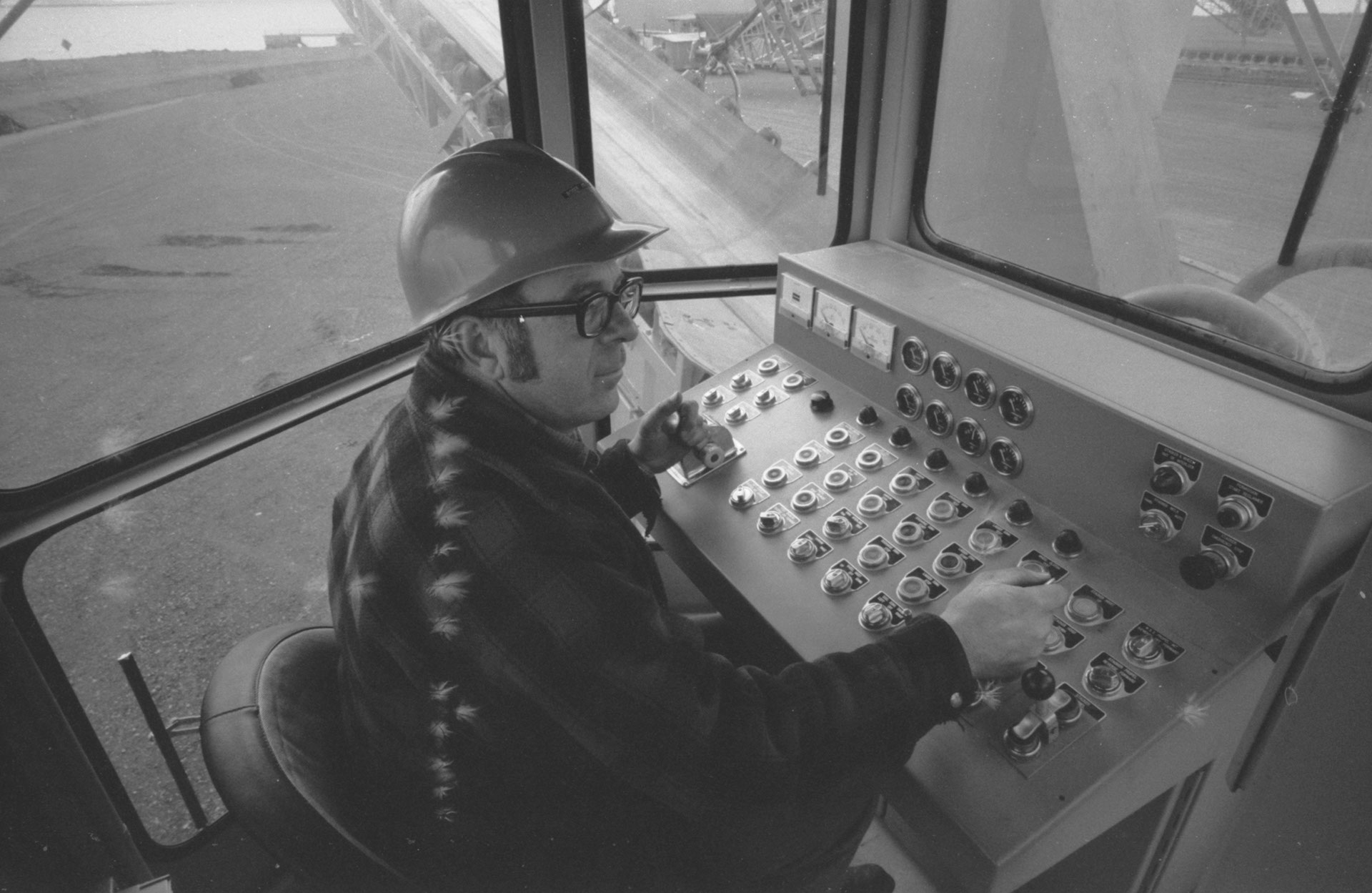
Photostory #504: West Coast Superport
Photographers
Maker
National Film Board of Canada
Release Date
March 1, 1970
Collection
CMCP fonds
Credit Line
Canadian Museum of Contemporary Photography fonds, National Gallery of Canada Library and Archive
Main Text
In progress Photostory 1/7 : Just coming into operation and with the first ship expected alongside the new 65-foot-deep wharf facility in three or four weeks is the Roberts Bank ocean terminal on the British Columbia coast. What shape this big Canadian superport will eventually take over the years ahead will depend on the vagaries of wind and tide of the world's trading patterns and marine engineering developments, but the initial phase is impressive by conventional cargo-handling methods. At first, five-men shifts will be operating massive automated bulk-loading equipment at a rate of 6,000 tons an hour. In two years, when a minimum of 8,000,000 tons a year is being handled, the shifts will be no more than 30 men strong. The cargo is coal, high-grade coking coal from the Rocky Mountain foothills near Fernie, B.C. Ideal for steel making, up to 7,000,000 tons annually will be shipped in Canadian Pacific Railway unit trains to Roberts Bank for transfer to dry-bulk cargo ships for delivery to Japan - all parts of a 15-year contract worth about $650 million. _x000B__x000B_Roberts Bank superport will ultimately utilize 5,000 reclaimed shoal-water acres. The bulk-loading facilities now going into operation, known as Westshore Terminals, take up only 50 acres and represent the first phase of what is probably destined to become an amazing ocean transfer point in decades to come. _x000B__x000B_Kaiser Resources Ltd, the company mining the coal near Fernie, also uses much heavy, automated equipment in removing the average 275-foot-thick rock overburden and mining the coal. The equipment includes, a huge dragline with a 54-cubic-yard capacity bucket, diesel-electric trucks that can carry 200 tons, electric shovels that take 25-cubic-yard bites and a complex conveyor-crusher-loading-facility - all for a total cost of $85 million. _x000B__x000B_Canadian Pacific with the task of transporting the coal 700 miles to the superport, has invested $50,000,000 in new locomotives, special rolling stock and track. _x000B__x000B_British Columbia, which could already boast the busiest port on the eastern rim of the Pacific, Vancouver, can now watch another giant arising just 20 miles to the south.
Subjects:
Locations:


